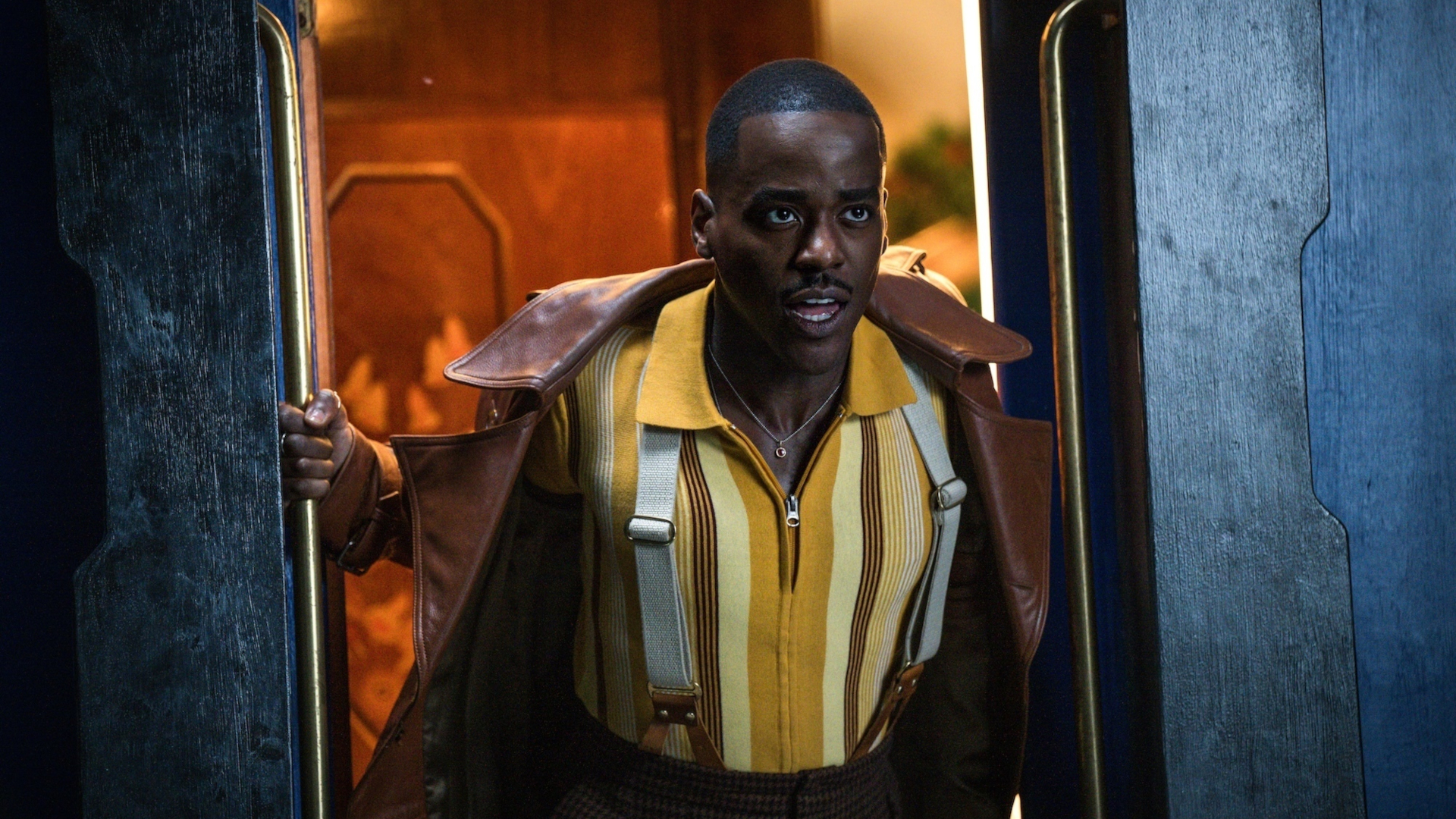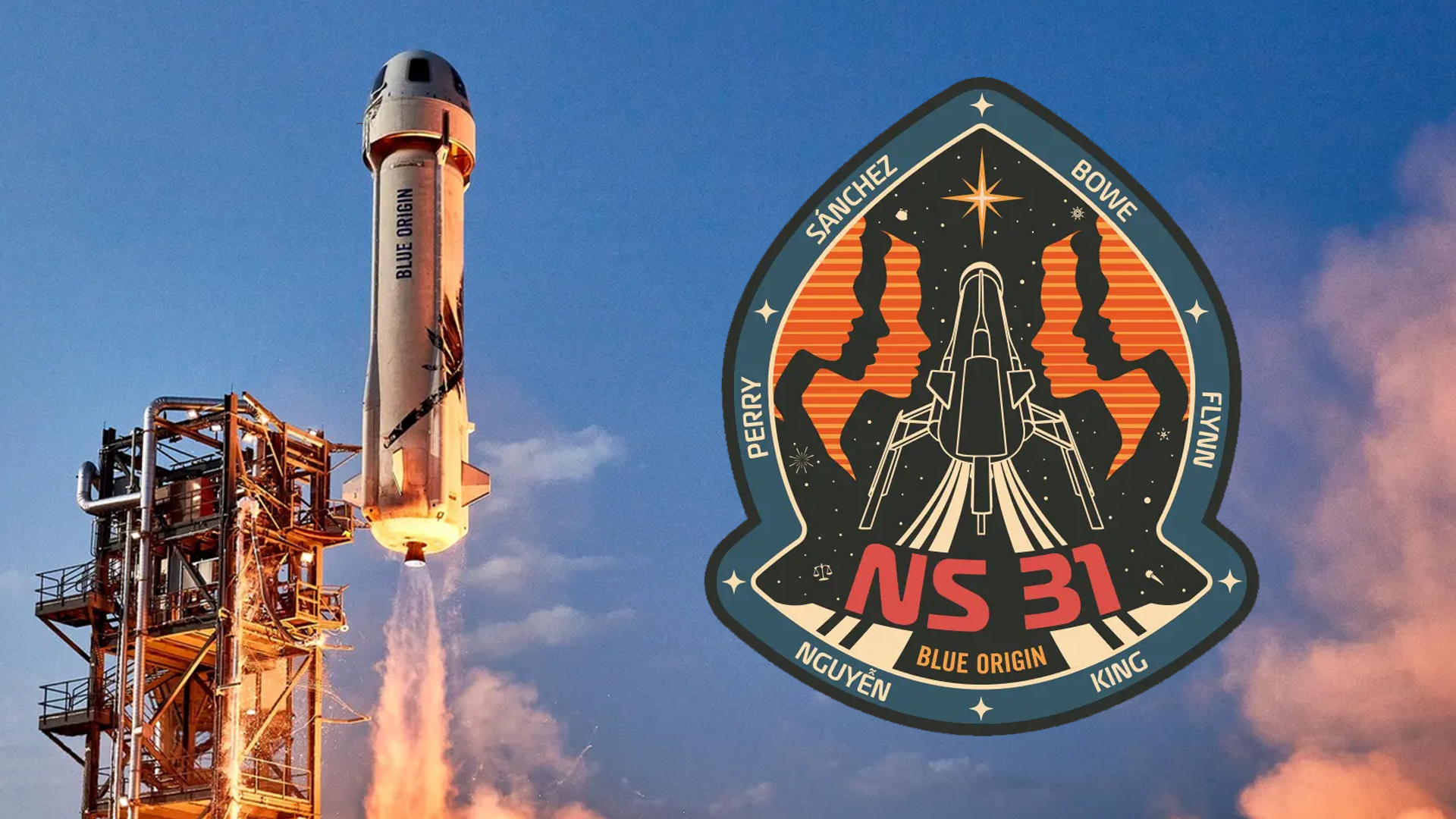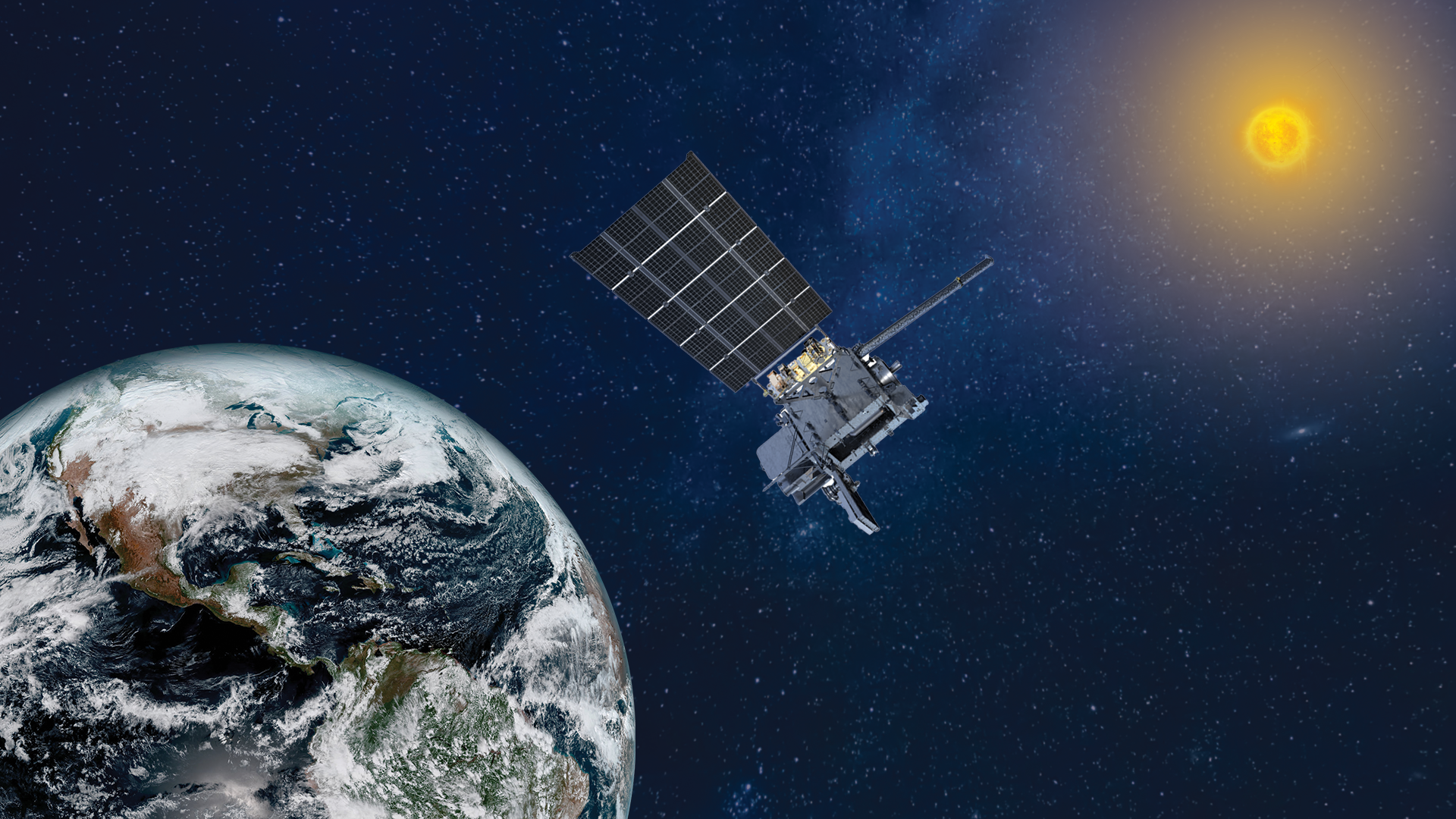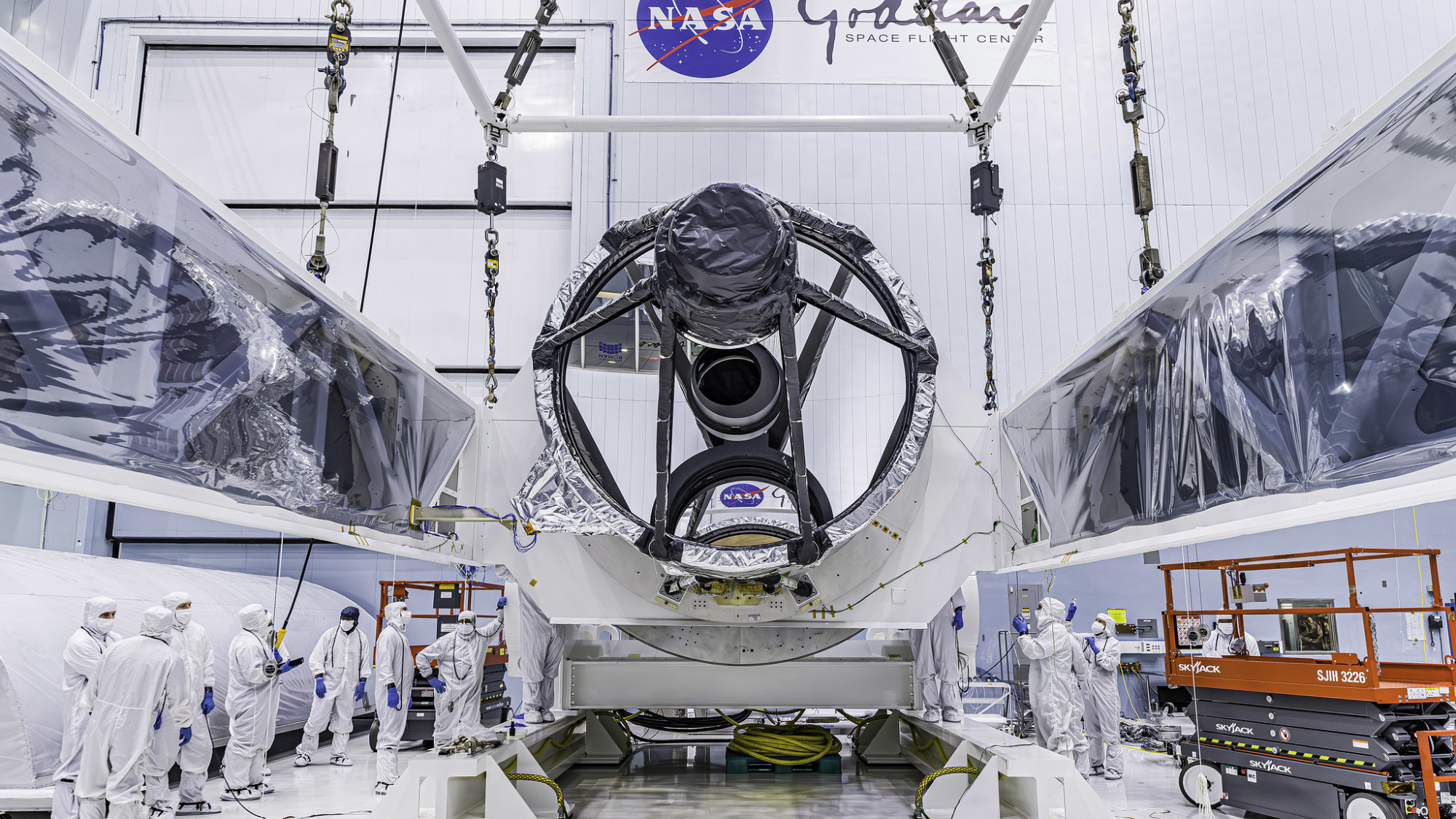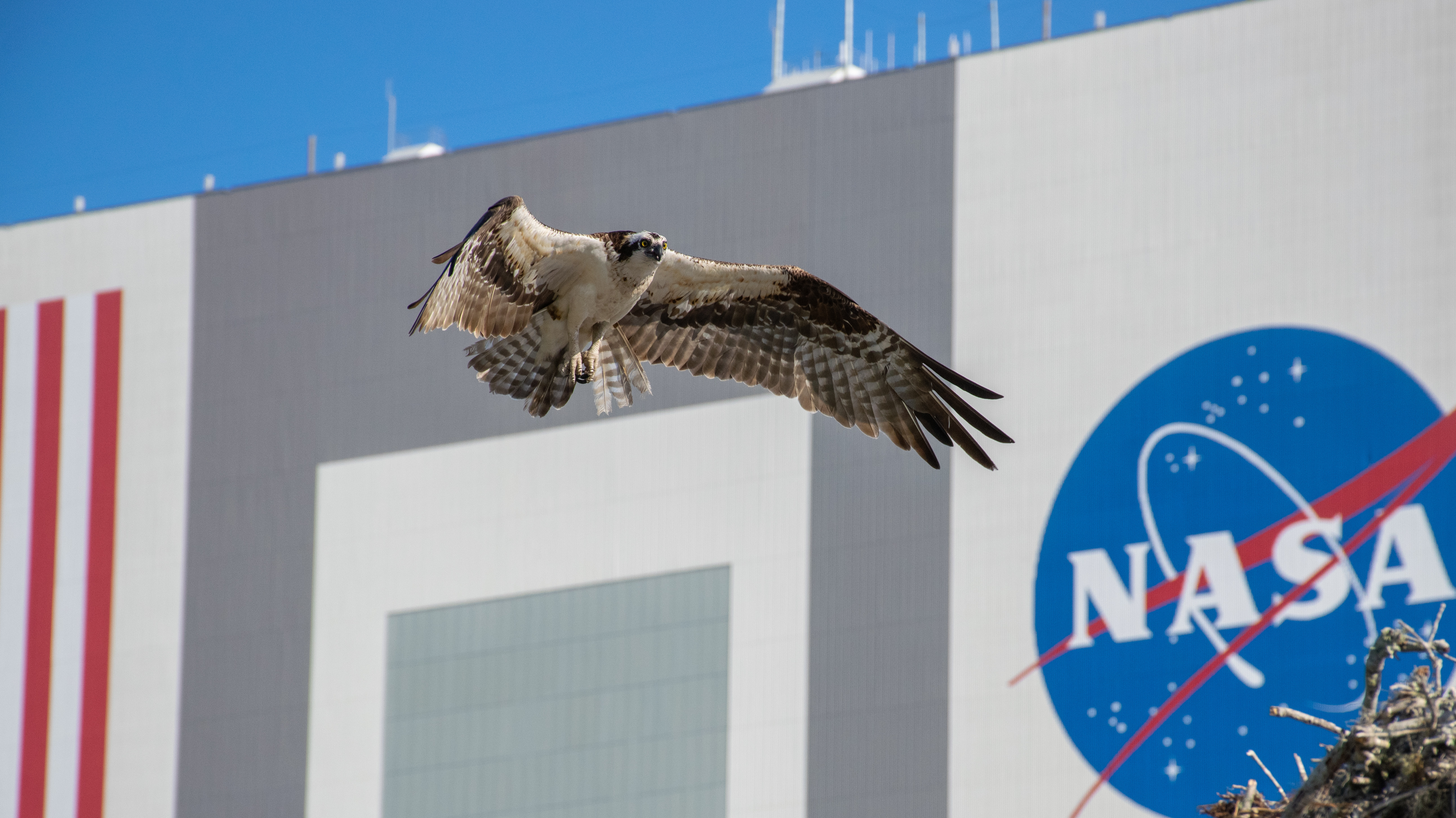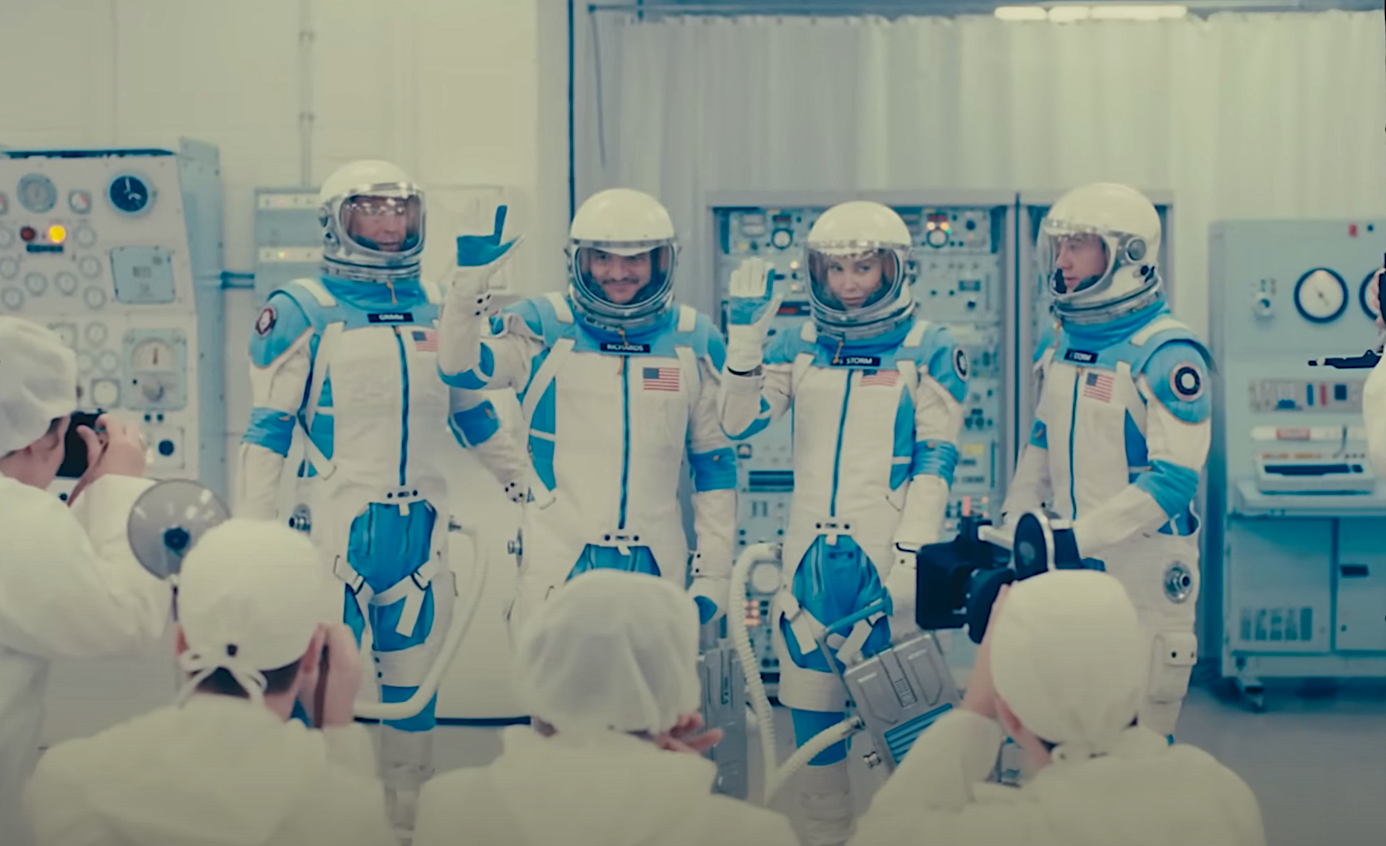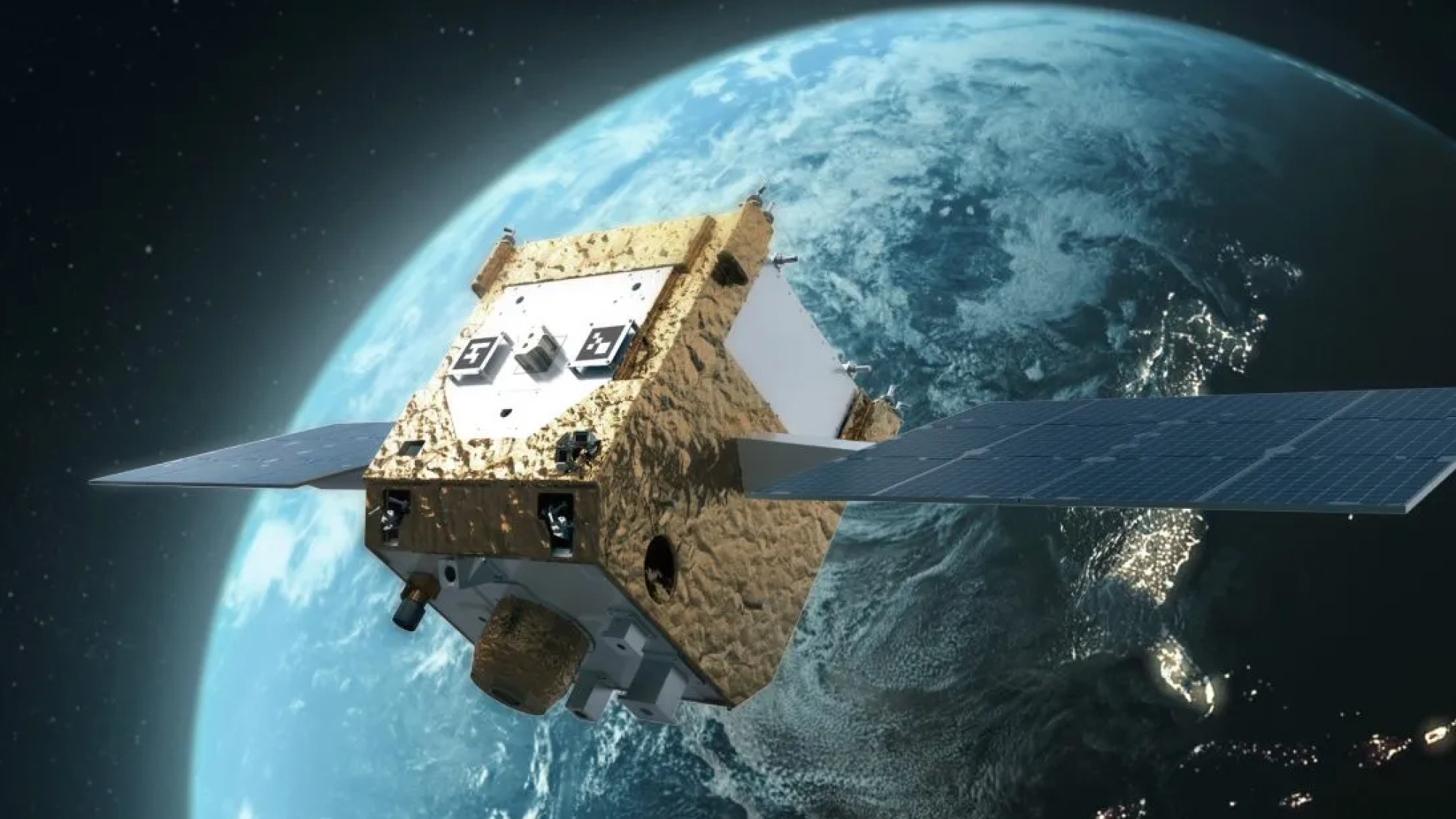Lunar Outpost unveils sleek new 'Eagle' moon rover (photos)
Eagle looks straight out of science fiction.
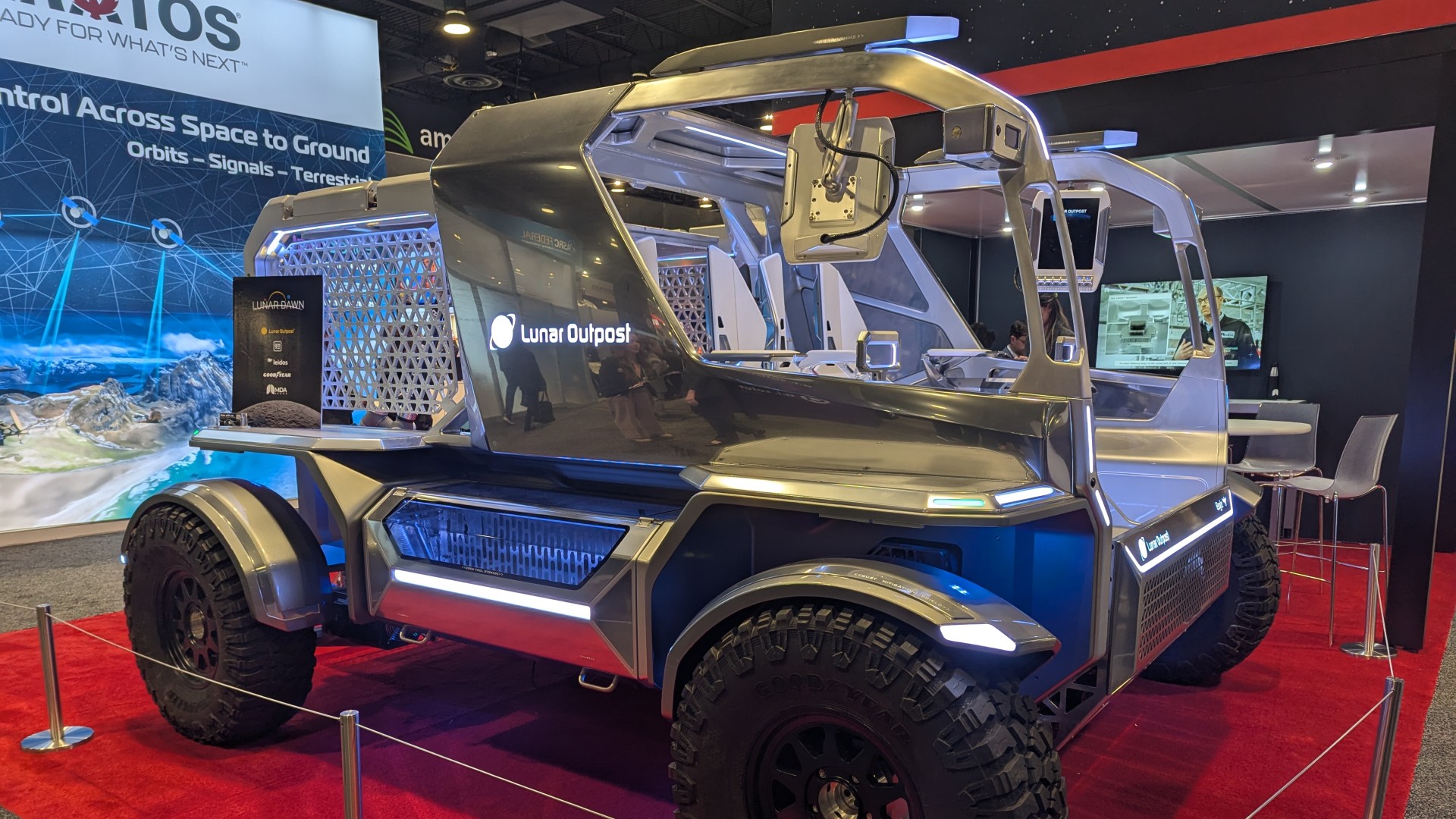
COLORADO SPRINGS, Colo. — The Eagle has landed.
Colorado-based Lunar Outpost just unveiled its new "Eagle" moon rover at the Space Foundation's 40th annual Space Symposium here, and it looks straight out of science fiction. Sporting a sleek metallic finish and ice-blue LED lighting, the Eagle rover turned quite a few heads on the expo floor this year. But Eagle boasts more than just futuristic looks.
The rover is packed with features designed with the next generation of Artemis program moon explorers in mind and is based on feedback from current NASA astronauts at NASA's Johnson Space Center, according to Lunar Outpost's A.J Gemer. "We've developed all of our crew and human interfaces through a lot of testing with NASA Johnson, we've had eight astronauts, even in full pressurized suits, evaluate the design, and their feedback is throughout the vehicle," Gemer told Space.com.
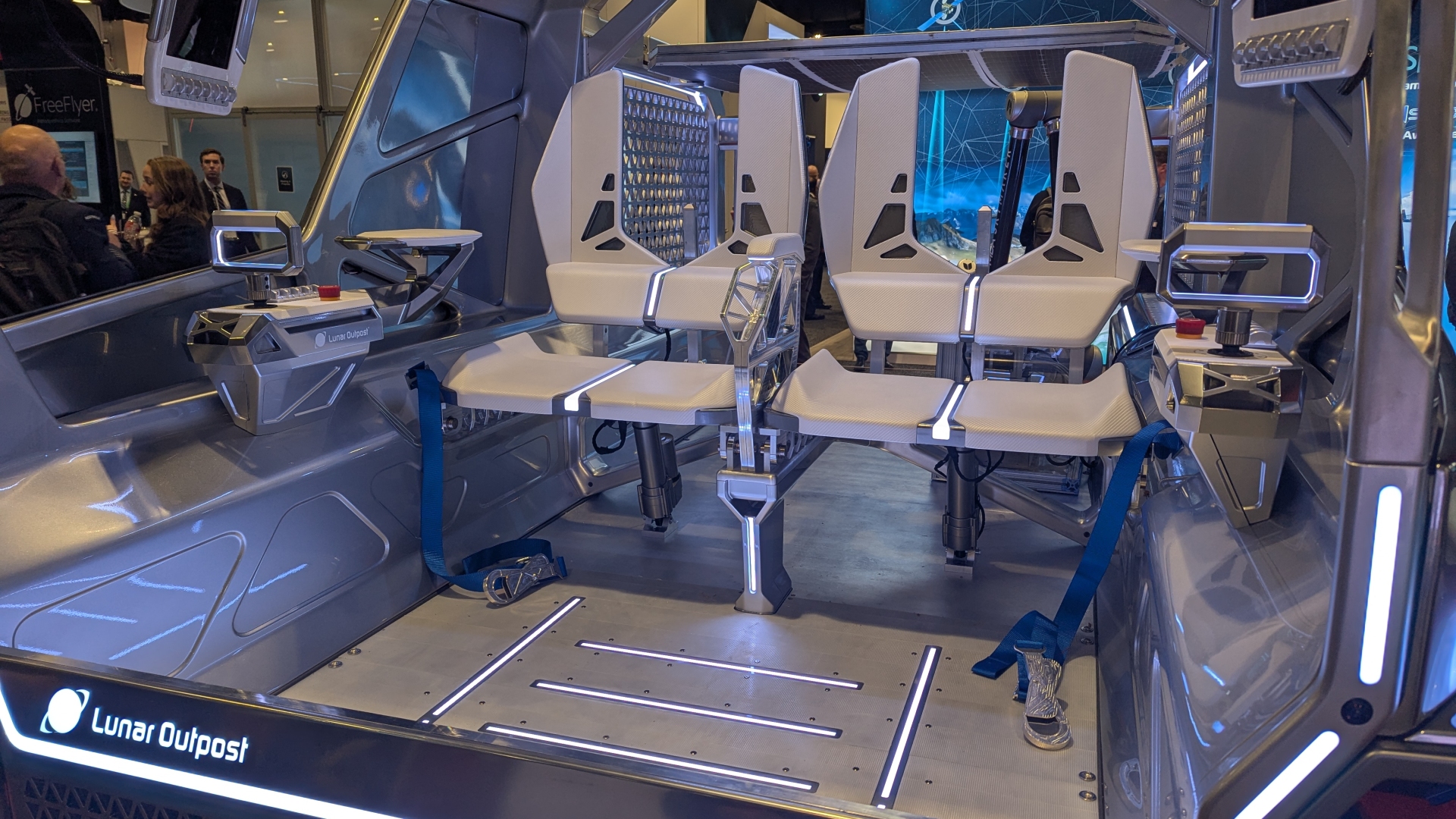
One of the features astronauts particularly enjoyed during testing is the wide, easily accessible front entry area, which is maneuverable even in a bulky spacesuit.
In the configuration shown here at the symposium, the Eagle vehicle features two seats for crew, each with its own redundant and mirrored controls, meaning either astronaut can control the rover. The steering controls on each side consist of a single handle that controls four individual motors that drive each wheel. Each wheel can turn independently of the other three, allowing the Eagle rover to turn on its center axis or "crab walk" sideways, Gemer said.
Related: Private mini rover aboard sideways Athena moon lander was ready to roll — but it couldn't get out
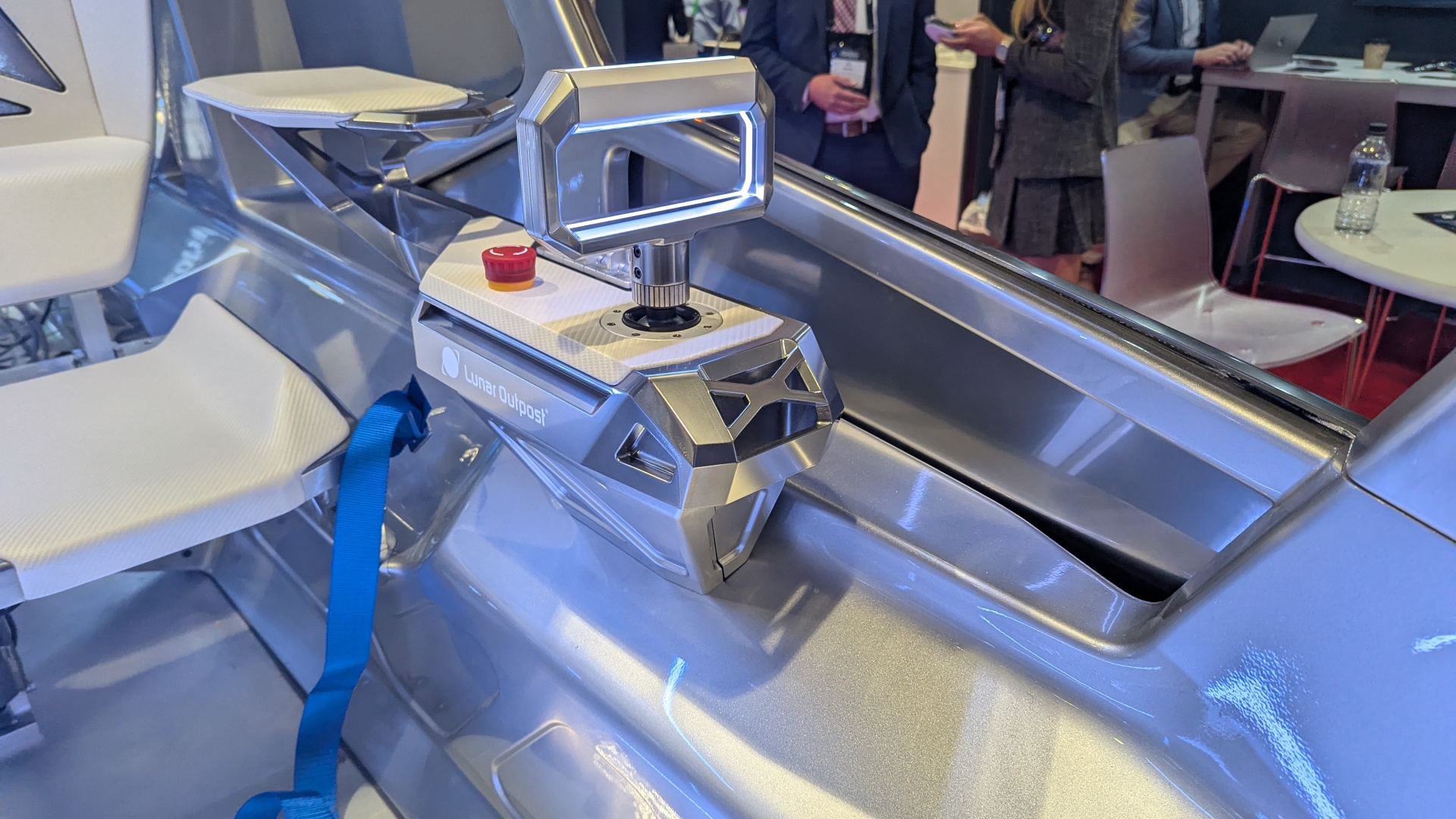
In addition to the hand controller, each seat in the Eagle rover has a multifunction display at eye level for each of the astronauts riding on board. These displays will fuse feeds from onboard cameras and Lunar Outpost's "Eagle eye" sensors that can see things astronauts' eyes cant, which will come in handy if the vehicle is ever sent to explore regions near the moon's south pole that contain permanently shadowed regions or deep craters where water ice might be hiding.
Get the Space.com Newsletter
Breaking space news, the latest updates on rocket launches, skywatching events and more!
"The idea is to extend the crew's perception," Gemer said, "and the displays put all that information right at their fingertips."
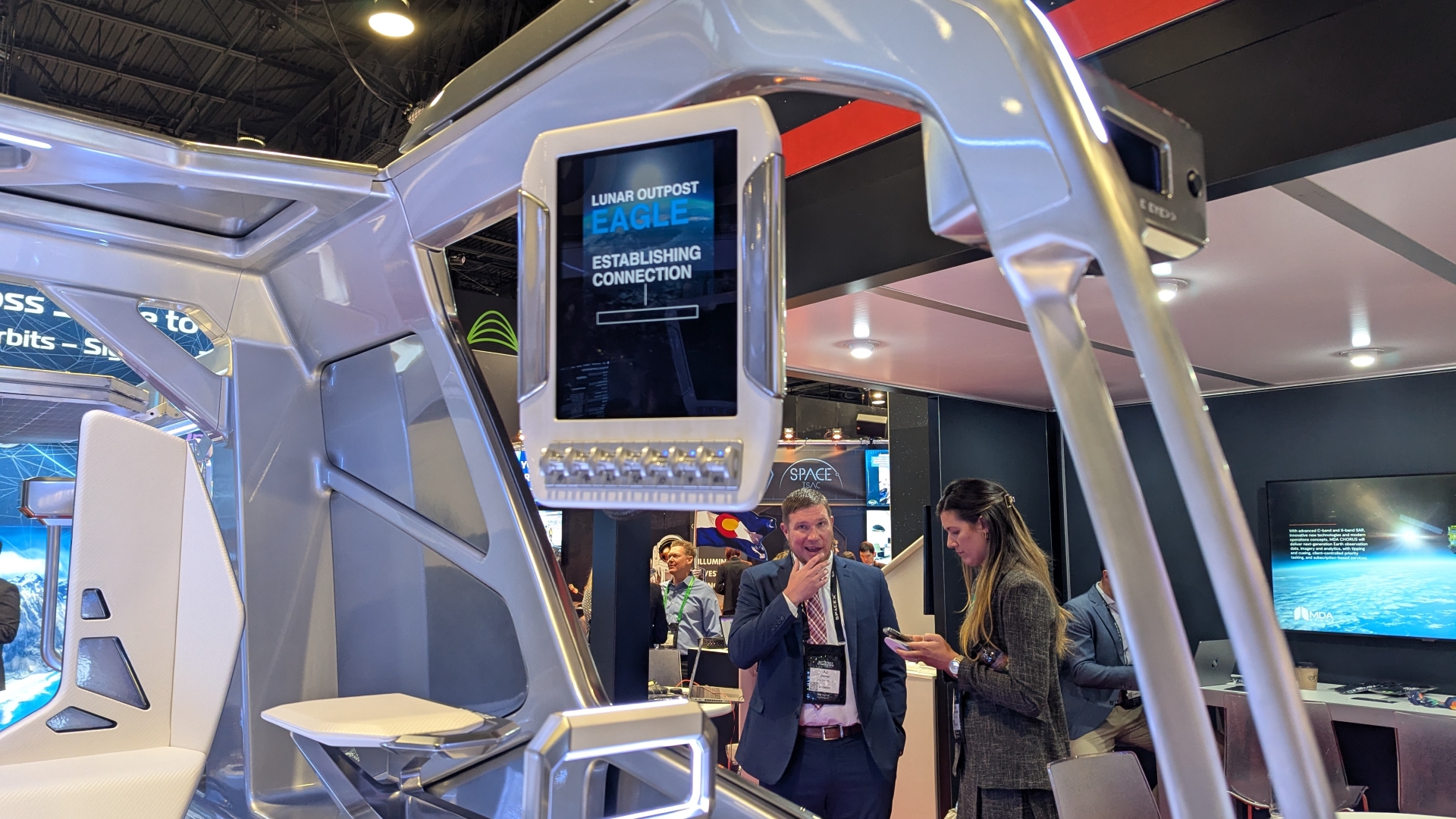
To help astronauts conduct science and exploration on the lunar surface, Eagle also features tool lockers and refrigerated sample containers to help bring home samples of the moon safely.
Each tool locker features a shelf that can raise up to astronauts' chest height, making it easy for them to reach what they need even in a bulky spacesuit. Additional tool racks and storage can be added to the racks along the sides of the rear of the vehicle.
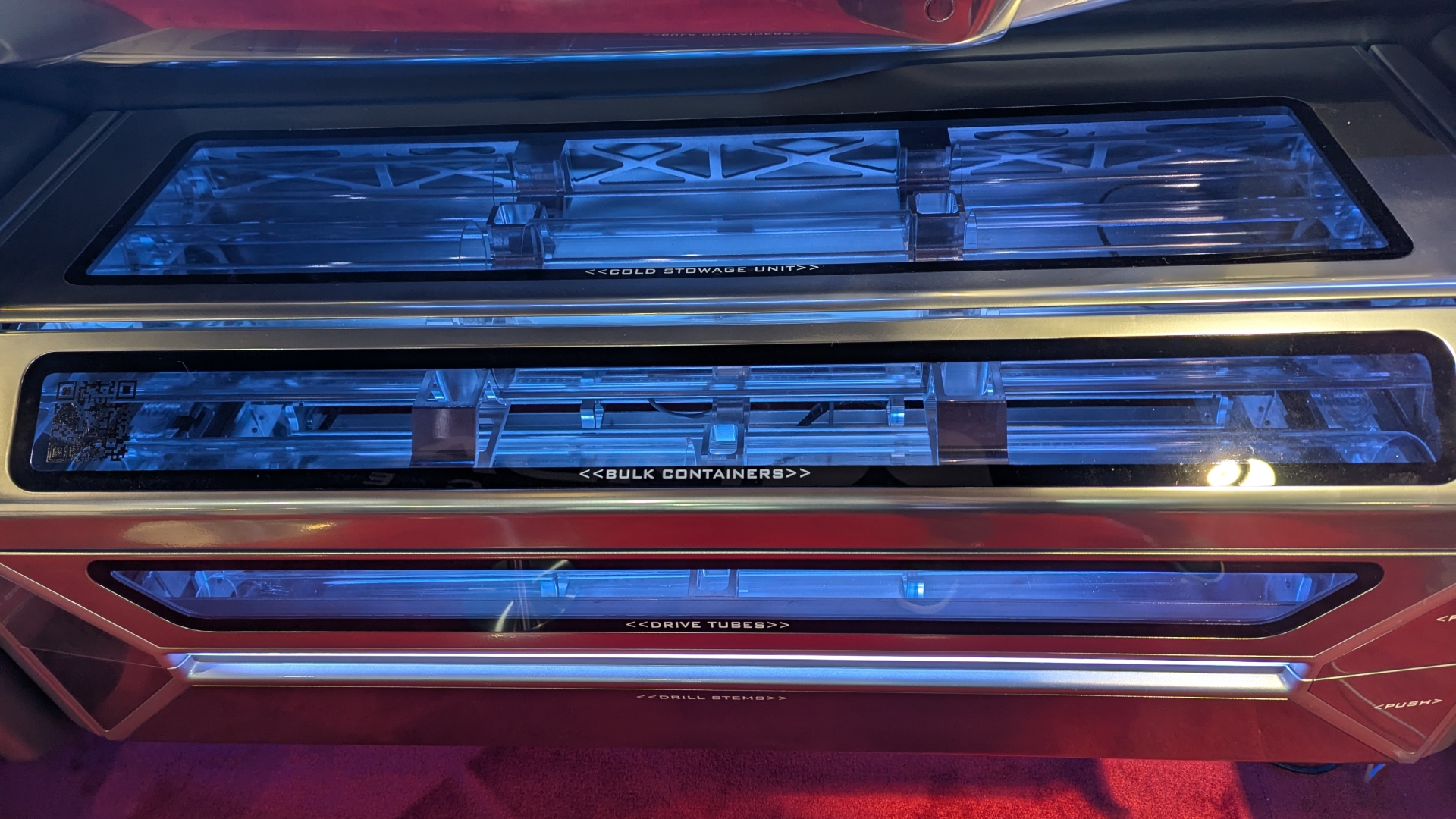
But Eagle wasn't just built with astronauts in mind. Gemer said the vehicle can be operated autonomously or by controllers on Earth, allowing it to explore the lunar surface even if astronauts aren't on the moon with it.
Lunar Outpost hopes to have Eagle on the moon by the end of the decade to support NASA's planned Artemis 5 mission. But the rover is currently in the running alongside two others, designed by Intuitive Machines and Venturi Astrolab, in NASA's quest to find its next "lunar terrain vehicle."
The total potential value of the lunar terrain vehicle services contract is $4.6 billion.
Join our Space Forums to keep talking space on the latest missions, night sky and more! And if you have a news tip, correction or comment, let us know at: community@space.com.

Brett is curious about emerging aerospace technologies, alternative launch concepts, military space developments and uncrewed aircraft systems. Brett's work has appeared on Scientific American, The War Zone, Popular Science, the History Channel, Science Discovery and more. Brett has English degrees from Clemson University and the University of North Carolina at Charlotte. In his free time, Brett enjoys skywatching throughout the dark skies of the Appalachian mountains.
You must confirm your public display name before commenting
Please logout and then login again, you will then be prompted to enter your display name.
